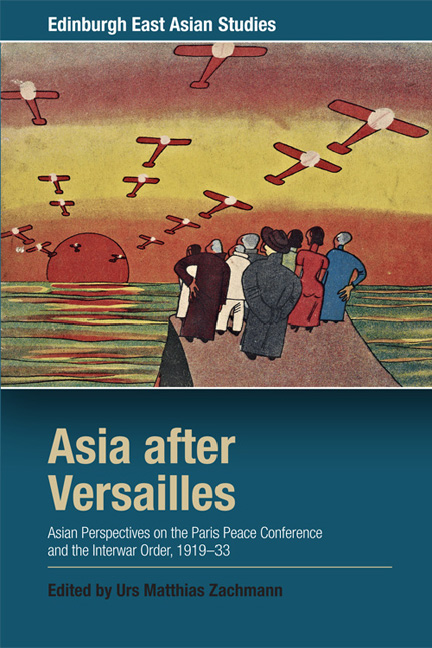 Asia after Versailles
Asia after Versailles Book contents
- Frontmatter
- Contents
- List of Illustrations
- Notes on Contributors
- Acknowledgments
- Introduction: Asia After Versailles
- Part I
- 1 The Correlation of Crises, 1918–20
- 2 Muslim Asia after Versailles
- 3 From Versailles to Shanghai: Pan-Asianist Legacies of the Paris Peace Conference and the Failure of Asianism from Below
- Part II
- Index
1 - The Correlation of Crises, 1918–20
from Part I
Published online by Cambridge University Press: 22 December 2017
- Frontmatter
- Contents
- List of Illustrations
- Notes on Contributors
- Acknowledgments
- Introduction: Asia After Versailles
- Part I
- 1 The Correlation of Crises, 1918–20
- 2 Muslim Asia after Versailles
- 3 From Versailles to Shanghai: Pan-Asianist Legacies of the Paris Peace Conference and the Failure of Asianism from Below
- Part II
- Index
Summary
Hundreds of millions of people who missed the news of Sarajevo or of Versailles nevertheless felt the shocks generated by Europe's war and peace. Of all the effects of the war and its settlement, the economic shocks, transmitted by the great rise and then fall of prices, may have been most universal in their social incidence. They were also global in their geographical reach. These economic revolutions were connected inextricably with the political and ideational movements that have received the largest share of historians’ attention.
World War I induced extraordinary transnational flows of masses of people (especially young men) and material supplies. With these masses of people on the move came an amplified interchange of ideas. With them came also an amplified flow of disease pathogens. At the same time, the war blockaded other, preexisting flows of people, goods and so on. Among the flows of information was an enormous flow of financial messages designating the privilege of employing newly created credits, meaning also the future obligation to repay newly created debts. These monetary messages corresponded to flows of material resources – and they signified the greatest international transfer of claims to wealth that had yet happened in such a temporally concentrated way. Simultaneously with these flows and counterflows of material goods and immaterial promises to pay, wartime embargoes and restrictions blocked the actual physical shipments of the gold and silver specie then used to settle international debts.
These new flows and blockages entailed extraordinary shifts in the prices of goods and extraordinary shifts in the relative values of different kinds of money. ‘At the margin’, as economists like to say, these notational revaluations meant very real changes in access to material resources, including food. The consequences of these changes included hunger, industrial strikes and food riots.
At multiple time scales, this postwar moment formed a hinge in social time. In common with earlier wars, World War I was followed in 1919 and 1920 by a rapid sequence of postwar boom followed by postwar depression. Historians have devoted attention to many individual aspects of this globally synchronous movement, but remarkably, it has not been grasped comprehensively as either an Asian or as a global phenomenon. This chapter aims to integrate historical understandings by sketching out some dimensions of region-wide correlation.
- Type
- Chapter
- Information
- Asia after VersaillesAsian Perspectives on the Paris Peace Conference and the Interwar Order, 1919-33, pp. 23 - 54Publisher: Edinburgh University PressPrint publication year: 2017
